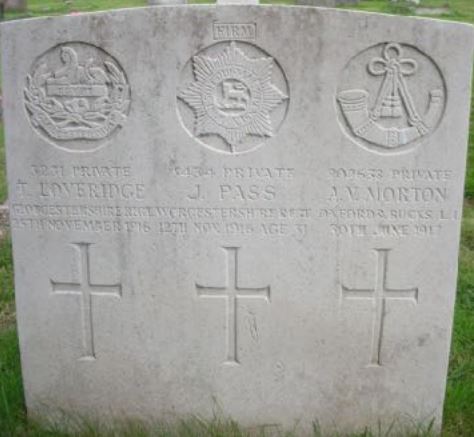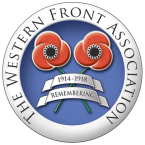3/4th (Reserve) Battalion, Oxfordshire & Buckinghamshire Light Infantry

Albert Victor Morton was born in the fourth quarter of 1893 at High Wycombe, Buckinghamshire, the son of George Henry Morton, a bricklayer and his wife Mary Ann. According to the 1911 Census the couple had eight children but only three had survived up to the time of the census, Albert (age 17), William (26) and Mary (12). The family lived at 5 Fairleigh Villas, Queens Road, Slough. Albert was a single man, whose occupation was a ‘pattern food factory hand’.
Little is known of his military service – no Army Service Record having survived. According to Soldiers Died in the Great War he enlisted at Oxford and at the time of enlistment was still living in Slough.
The 3/4th Battalion of the Oxfordshire & Buckinghamshire Light Infantry was a Territorial Reserve unit and had been located in Cheltenham from the autumn of 1916 until March 1917. It is almost certain that Private Morton fell sick during this time and was possibly left behind in a local hospital when his unit moved on. He died in Cheltenham on 30 June 1917 age 31. A recently released Pension Record Card (PRC) states the cause of death to be tubercular nephritis, aggravated by military service.
The PRC also indicates that Albert was a married man, with one child (Mildred Iris, born 11 November 1914). His widow is shown as Lydia Mildred Eleanor and the BMD records on Ancestry reveal that Albert married Lydia Mildred Eleanor Gilbert at Eton in the spring of 1914. Following Albert’s death, she re-married, on 3 November 1917, to a Canadian soldier, John Patrick Melia.
There is no report of his funeral in the local newspaper but he was buried in Cheltenham Cemetery in a grave which he apparently shares with two others (5434 Private J Pass, Worcestershire Regiment, who died on 12 November 1916 and 3231 Private Thomas Loveridge, Gloucestershire Regiment, who died on 25 November 1916). The other soldiers probably died whilst serving in the area and were buried in the plot previously. Double burials were quite common but three graves to one plot is usually only found in battlefield cemeteries and even then rarely. Over the plot the CWGC has erected a very unusual headstone, three stones merged into one, bearing separate details of each soldier. Evidently this type of headstone is not unique but is rarely found and the extended headstone performs a similar function to a screen wall commemoration – where there are multiple burials in a plot (common in cemeteries linked to military hospitals).
Researched by Graham Adams 15 December 2014 (revised 4 August 2021)
